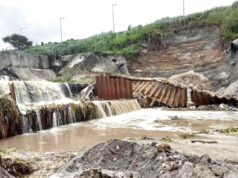ANGELES CITY– Red tide alert in most parts of the country has recently been lifted, but the Bureau of Fisheries and Aquatic Resources (BFAR) warned yesterday that shellfish in coastal waters off Bataan and at the Masinloc Bay in Zambales remain toxic.
BFAR’s Bulletin No. 10 issued yesterday also said that red tide alert has remained in Domangquillas Bay in Zamboanga del Sur and Marcielagos Bay in Zamboanga del Norte and Misamis Occidental.
Teresita Gulle, BFAR red tide monitoring officer, told Punto that latest laboratory findings revealed some 200 micrograms of red tide toxins per 100 grams of shellfish meat from samples gathered from the coastal areas of Balanga City, Mariveles, Limay, Orion, Pilar, Orani, and Abucay.
The tolerable limit for red tide elements in shellfish meat is 60 micrograms per 100 grams of meat, she stressed.
Gulle said that at the Masinloc Bay, shellfish meat samples revealed some 75 micrograms per 60 grams of meat.
“Such levels could result in paralytic shellfish poisoning in humans,” she stressed.
Gulle could not immediately cite data on red tide toxicity in the Zamboanga provinces.
The red tide alert in Bataan was initially raised way back in November last year, while that in Zambales was earlier this year. Harvesting and eating of shellfish from the affected areas have remained prohibited.
Last week, the BFAR declared the coastal waters of Alaminos City and two western Pangasinan towns free of red tide toxin, effectively lifting the ban on consumption and trade of shellfish gathered from those areas.
BFAR said Anda and Bolinao towns and the city of Alaminos were no longer plagued by paralytic shellfish poison.
During the last Holy Week, some folk in Bataan urged BFAR to lift the red tide alert in their areas, as they insisted that they have been consuming shellfish recently without being poisoned.
This paved the way for BFAR to involve local government and even barangay officials in the gathering of shellfish meat samples and in the testing of such samples at the BFAR laboratory in Quezon City.
“They got convinced that red tide plague has remained after seeing rats die after eating shellfish meat samples,” Gulle said.
She said that some folk in Bataan might have developed some immunity from red tide toxins and this explained why those who have been eating shellfish harvested from the affected areas were not poisoned. But she urged them to cease from consuming shellfish from the affected waters.
Gulle also said that samples from other parts of the country indicated no other red tide plague.



